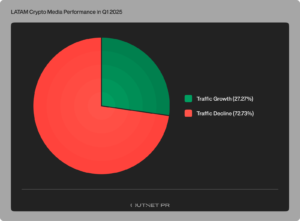
The Risks Associated with Investing in Stablecoins
Stablecoins have emerged as a popular alternative to traditional cryptocurrencies, offering a more stable and secure means of exchange. While they were initially developed for use in the cryptocurrency world, stablecoins are now being embraced by investors as well. However, like any investment, stablecoins carry certain risks. In this article, we’ll explore the potential risks associated with investing in stablecoins and how to manage them.
Introduction to Stablecoins
Stablecoins are digital currencies that are designed to maintain a stable value, typically pegged to a fiat currency like the US dollar. There are several different types of stablecoins, but most fall into one of three categories:
- Fiat-backed stablecoins: These stablecoins are backed by a reserve of fiat currency, such as the US dollar or the euro. Examples include Tether (USDT), USD Coin (USDC), and Paxos Standard (PAX).
- Crypto-backed stablecoins: These stablecoins are backed by a reserve of cryptocurrency, such as Bitcoin or Ethereum. Examples include MakerDAO’s DAI and BitShares (BTS).
- Algorithmic stablecoins: These stablecoins use an algorithm to adjust the supply of the stablecoin to maintain its peg. Examples include Ampleforth (AMPL) and Basis Cash (BAC).
Risks Associated with Investing in Stablecoins
While stablecoins offer many benefits, there are also several risks associated with investing in them.
Market Volatility
One of the main risks associated with investing in stablecoins is market volatility. While stablecoins are designed to maintain a stable value, there is still the potential for fluctuations, particularly in the event of a market shock or economic crisis. This could pose a risk for investors who rely on stablecoins for their portfolio.
Regulatory Uncertainty
Another risk associated with investing in stablecoins is regulatory uncertainty. While some countries have embraced stablecoins and created clear regulatory frameworks for their use, others have been more cautious. In the United States, for example, stablecoins are largely unregulated, which has led to concerns about their potential use for illicit activities.
Counterparty Risk
Another risk associated with investing in stablecoins is counterparty risk. Fiat-backed stablecoins, for example, are only as stable as the fiat currency they are backed by. If the issuing company were to go bankrupt or be subject to a regulatory crackdown, investors could lose their investment.
Technical Failures
Finally, there is the risk of technical failures or security breaches. While stablecoins are designed to be secure, there is always the potential for technical glitches or vulnerabilities to be exploited by hackers. This could result in the loss of funds or other financial damage.
How to Manage the Risks of Investing in Stablecoins
While there are certainly risks associated with investing in stablecoins, there are also steps that investors can take to manage those risks.
Do Your Research
The first step in managing the risks of investing in stablecoins is to do your research. This means understanding the different types of stablecoins available, their underlying technology and security measures, and the regulatory environment in which they operate.
Diversify Your Portfolio
Another way to manage the risks of investing in stablecoins is to diversify your portfolio. This means investing in a variety of different assets, including stocks, bonds, and other cryptocurrencies. By diversifying your portfolio, you can reduce the impact of any one asset on your overall investment strategy.
Use Reputable Exchanges
When investing in stablecoins, it’s important to use reputable exchanges that have a proven track record of security and reliability. Look for exchanges that offer strong security measures, such as two-factor authentication and cold storage for funds.
Stay Up-to-Date on Regulatory Changes
It is important to stay up-to-date on regulatory changes related to stablecoins. This means following news and developments related to stablecoin regulation in your country or region, and understanding the potential impact of those changes on your investment strategy.
Examples of Stablecoin Investment Risks
Despite the potential benefits of investing in stablecoins, there have already been several examples of risks and challenges associated with this type of investment.
Tether Controversy
Tether (USDT), one of the most popular fiat-backed stablecoins, has been the subject of controversy in recent years. Critics have raised concerns about the company’s transparency and the fact that it has not been audited by a third-party accounting firm.
Crypto-Backed Stablecoins
Crypto-backed stablecoins like MakerDAO’s DAI have also faced challenges. In March 2020, for example, the price of Ether (ETH) dropped dramatically, which caused the value of DAI to become overcollateralized. This led to an auction of DAI that caused its value to plummet.
Algorithmic Stablecoins
Algorithmic stablecoins like Ampleforth (AMPL) have also faced challenges. In July 2020, for example, the price of AMPL dropped by over 80% in just a few hours, which led to losses for investors.
The Role of Stablecoins in Portfolio Diversification
Despite the risks associated with stablecoin investments, they can also play an important role in portfolio diversification. By including stablecoins in a diversified portfolio, investors can potentially reduce the overall volatility of their portfolio and protect against market downturns.
Regulatory Challenges Facing Stablecoin Investors
One of the key challenges facing stablecoin investors is regulatory uncertainty. While some countries have embraced stablecoins and created clear regulatory frameworks for their use, others have been more cautious. In the United States, for example, stablecoins are largely unregulated, which has led to concerns about their potential use for illicit activities.
Counterparty Risks Associated with Stablecoin Investments
Another risk associated with stablecoin investments is counterparty risk. If the issuer of a stablecoin were to go bankrupt or be subject to a regulatory crackdown, investors could lose their investment. This risk can be mitigated by using reputable stablecoin issuers and exchanges.
Technical Risks and Vulnerabilities Associated with Stablecoins
Finally, there is the risk of technical failures or security breaches. While stablecoins are designed to be secure, there is always the potential for technical glitches or vulnerabilities to be exploited by hackers. This could result in the loss of funds or other financial damage.
The Future Outlook for Stablecoin Investments
Despite the risks and challenges associated with stablecoin investments, there is significant potential for this asset class to continue growing in popularity and adoption. As more countries and institutions embrace stablecoins, and as new innovations in stablecoin technology emerge, the future looks bright for this exciting new asset class. However, as with any investment, it’s important for investors to remain vigilant and informed about the risks and challenges associated with stablecoins.
Conclusion
Stablecoins offer many potential benefits as a means of exchange and investment. However, like any investment, stablecoins carry certain risks, including market volatility, regulatory uncertainty, counterparty risk, and technical failures. To manage these risks, investors should do their research, diversify their portfolio, use reputable exchanges, and stay up-to-date on regulatory changes. As stablecoins continue to gain in popularity and adoption, it will be important for investors to remain vigilant and informed about the risks and challenges associated with this type of investment.
I have worked in the cryptocurrency industry for over 5 years and have written numerous articles on the subject. I am well-versed in all aspects of cryptocurrencies and blockchain technology, and am an expert in the field.








